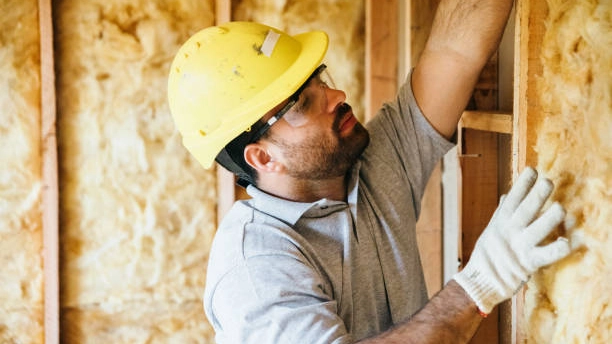How much does it cost to insulate HVAC? | FUNAS Guide
Insulating your HVAC system significantly reduces energy waste and improves efficiency. The cost varies widely based on several factors, including the type of insulation, the size of your system, labor costs, and regional pricing. This article explores these factors to give you a better understanding of the potential expense and return on investment. Contact FUNAS for expert advice.
How Much Does it Cost to Insulate HVAC? FUNAS
HVAC professionals frequently grapple with the question: How much does it cost to insulate HVAC systems? This article provides insights into the cost variations and factors influencing the price of HVAC insulation, helping you accurately estimate project costs.
Factors Affecting HVAC Insulation Costs
Several factors significantly influence the overall cost of insulating HVAC equipment. Understanding these elements helps in budgeting accurately.
Type of Insulation
The type of insulation chosen heavily impacts the cost. Fiberglass, rigid foam boards (polyisocyanurate or polyurethane), and spray foam are common options, each with varying price points and thermal performance characteristics. Spray foam, while offering superior insulation, generally commands higher costs than fiberglass.
System Size and Complexity
Larger and more complex HVAC systems naturally require more insulation materials and labor, directly increasing the overall cost. Smaller, simpler systems will have lower material and labor expenses.
Labor Costs
Labor costs are a significant portion of the total expense. The accessibility of the HVAC equipment and the complexity of the installation will affect the time and therefore the labor costs involved. Geographic location also impacts hourly rates.
Regional Pricing
Material and labor costs vary regionally. Areas with high labor demand or limited material suppliers may have higher prices compared to areas with more competition.
Estimating Costs
Providing an exact cost without specific project details is impossible. However, a basic estimate can be formed by considering the factors above. For instance, insulating a small residential system with fiberglass might range from a few hundred dollars to a thousand, while a large commercial system with spray foam could cost significantly more – several thousand or even tens of thousands of dollars.
Return on Investment
While the upfront cost of HVAC insulation might seem significant, the long-term energy savings often provide a substantial return on investment (ROI). Reduced energy consumption leads to lower utility bills, offering significant cost savings over the lifespan of the system. This cost reduction also contributes to a smaller carbon footprint.
Conclusion
Accurately estimating the cost to insulate HVAC systems necessitates carefully considering the type of insulation, the system's size, labor costs, and regional pricing variations. While the initial investment can be considerable, the energy savings and improved system efficiency justify the expense in the long run. Contact FUNAS for a detailed quote tailored to your specific needs.
How thick is acousticlining? | FUNAS Guide
What are the disadvantages of thermal insulation? | FUNAS Guide
How much does acousticfoam reduce sound? | FUNAS Guide
What is a good R-value for thermal insulation? | FUNAS Guide

Ultimate Guide: What is Insulating a House?
service
Are your rubber foam products environmentally friendly?
Yes, our insulation products are designed with sustainability in mind. They help reduce energy consumption by minimizing heat loss and gain, and they are made from durable materials that have a long life cycle, reducing the need for frequent replacement.
What types of rubber foam insulation products do you offer?
We offer a wide range of rubber foam insulation products, including custom shapes and sizes, thermal and acoustic insulation solutions, and options with specialized coatings such as flame retardancy and water resistance. Our products are suitable for applications in HVAC, automotive, construction, and more.
How does your technical support work?
Our technical support team is available to guide you through every stage of your project—from product selection and design to installation. We provide expert consultation to ensure that you get the best insulation solution for your needs and can assist with troubleshooting if needed.
FAQ
How do I choose the right insulation for my project?
Our team can help you choose the best material for heat insulation based on your specific needs, such as thermal resistance, acoustic properties, and environmental conditions.
Can your insulation products be customized?
Yes, we offer customized solutions for insulation material wholesale to meet the specifications of your project, including custom specifications, sizes, foils and adhesives, colors, etc.
You might also like



This product has passed the national GB33372-2020 standard and GB18583-2008 standard. (The product is a yellow liquid.)
Anggu foam phenolic glue is a kind of glue with corrosion resistance, low odor, high strength and excellent brushing property. Can be sprayed for construction with fast surface drying speed, long bonding time, no chalking and convenient operation.

This product has passed the EU REACH non-toxic standard, ROHS non-toxic standard. (The product is black glue.)
Anggu 820glue is a low-odor, high-strength quick-drying glue; Fast drying speed, long bonding time, no powder, non-toxic.
Discover the future of energy efficiency with FUNAS's "Top Thermal Insulation Materials List for 2025." Our expertly curated list highlights innovative solutions perfect for your construction and renovation needs. Stay ahead of the curve with cutting-edge insulation technology designed for optimal thermal performance and sustainability. Trust FUNAS for advancements that redefine comfort and efficiency in every project.
Leave a message
Have any questions or concerns about our products? Please leave us a message here and our team will get back to you promptly.
Your queries, ideas, and collaboration opportunities are just a click away. Let’s start a conversation.


















































